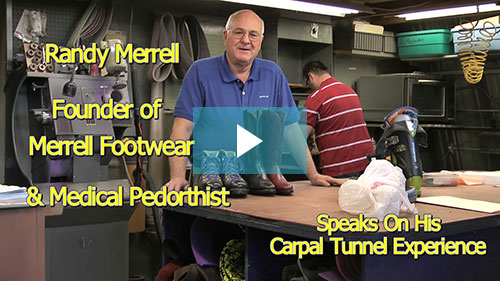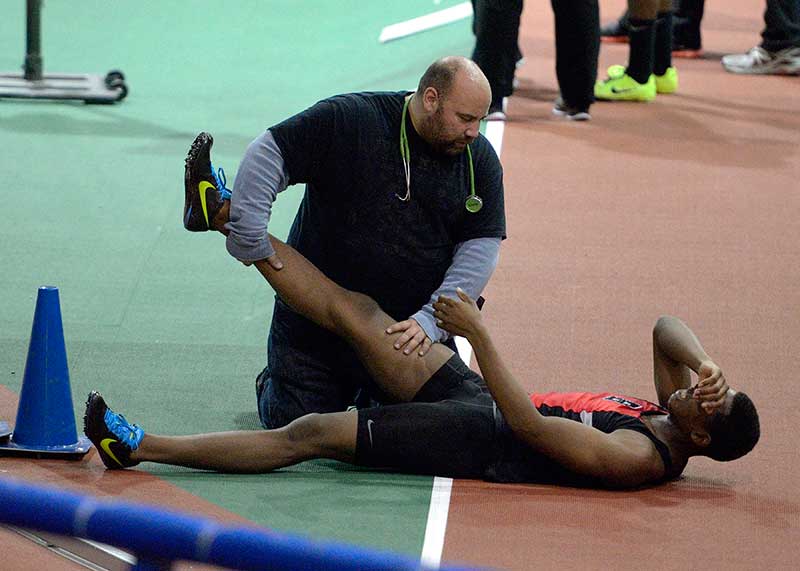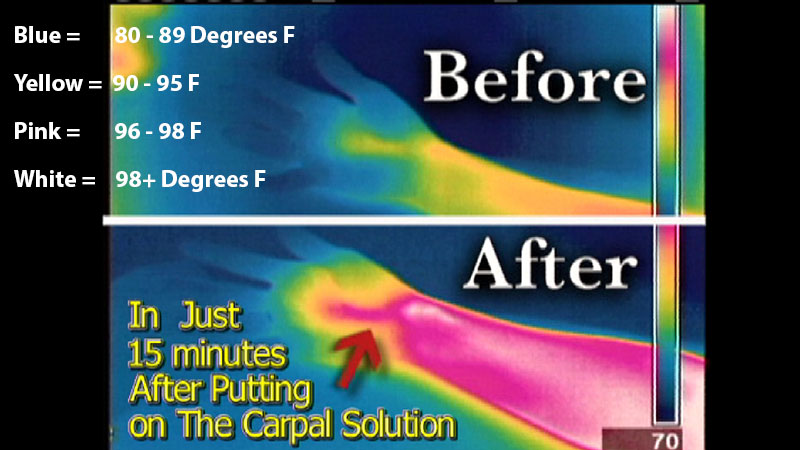What if I get worse before I get better when using the Carpal Solution?
About 8-10% of people with Carpal Tunnel who use the Carpal Solution Treatment find that their discomfort increases for a few days up to a few weeks, before they start improving. If your symptoms worsen, ironically, it is actually a signal that the Carpal Solution Therapy is working. The Doctors call this phenomena: “Soft Tissue Transition”.
Don’t lose hope, even though it is frustrating to find your symptoms and discomfort increases for a short time. Within a few days or a maybe up to a couple of weeks you will be on your way to complete recovery without the risks of surgery and you will know it was worth the extra effort.
Below we offer free access to the Doctors’ Protocol for minimizing Soft Tissue Transition and accelerating your recovery. The Doctors recommendations provide some extra steps you can do at home to accelerate your recovery and minimize the discomfort while you go through this transition.
“Effective Carpal Tunnel Treatment requires gentle stretching consistently applied for 224 hours over Six Weeks.
The Carpal Solution is the only way to achieve this type of stretching therapy.”
It is up to you to decide if you want to keep going with the treatment with worsening symptoms. However there are some important issues to consider.
Most people start the Carpal Solution Treatment with the intent to use a doctor developed treatment that is clinically documented to avoid the downtime, risks and complications of Carpal Tunnel Surgery.
Some people lose hope and give up on the Carpal Solution treatment once their symptoms worsen. Unfortunately for them, they are giving up when the Carpal Solution Treatment is just starting to work. These people that give up face a gauntlet of risks, long rehabilitation and downtime with surgery – only to find that their symptoms come back even after a successful surgery.
Only 50 – 60% of surgical procedures on Carpal Tunnel are successfully based on patient surveys. Most people feel surgery is not worth the risks and downtime if it comes back and repeat surgical procedures are required. Second surgeries for Carpal Tunnel have a success rate in the range of 35 to 45% due to scar tissue formation.
You can learn more about Carpal Tunnel Surgery Here
- 1st Surgeries Success Rate 50 -60%
- 2nd Surgeries Success Rate is 35 – 45%
- 3rd Surgeries are not recommended
- CTS comes back for over 85% of people within 6 months to an 8 year time frame.
Soft tissue Injuries Require Six Weeks to Heal Once Normal Blood Circulation Is Restored.
So, even though it is frustrating to get worse before you get better, all patients that get through this Soft Tissue Transition say it was worth it to get to the other side. Their Carpal Tunnel Symptoms go into complete remission and they go on with a normal life with no pain, no numbness, and no sleep interruption. Routine sleep interruption is torturous enough with day time drowsiness, brain fog and irritability. However, it can also lead to serious medical conditions such as high blood pressure, stroke, heart disease, and depression if left untreated for more than 3 months.
Watch videos of People telling their experience with Soft Tissue Transition while using the Carpal Solution.

Randy Merrell, Founder of Merrell Foot Wear and leading Medical Pedorthist (Foot Orthotic Expert) and considered the best Custom Boot Maker in the world by Backpacker Magazine, tells his ordeal with Carpal Tunnel and how he experienced more intense discomfort/symptoms for a couple of weeks before he put Carpal Tunnel in complete remission using the Carpal Solution Treatment.

Anthony is a Network Engineer and uses the computer to manage and maintain complicated computing networks throughout the world. He also, is a home improvement enthusiast. He buys homes and fixes them up doing construction in his spare time after work. Here he tells his ordeal with Carpal Tunnel and how he experienced worse symptoms for a week before he put Carpal Tunnel in complete remission with the Carpal Solution Treatment.
As you go through this phase of treatment, it is important to understand what is happening with your hands and wrists.
So, what is Soft Tissue Transition? There are several different types of tissue in and around the Carpal Tunnel collectively known as Soft Tissue. These include, Fascia Tissue, Muscle, Tendons, Tendon Sheaths, Ligaments, etc. Injured soft tissue loses its flexibility and contracts in the tight carpal tunnel space and pinches the nerve. Also, swelling or inflammation is common with injured soft tissue. The inflammatory fluids build up, putting pressure on the nerve and the blood vessels in this narrow area.
Both of these mechanisms put pressure on the Median Nerve and also on the blood vessels restricting blood flow and blocking natural healing.
In some cases (about 8-10%), when you start to gently stretch injured soft tissue, it can generate more inflammation as part of the process of restoring flexibility and your body’s healing process. The increased inflammation puts more pressure on the Median Nerve for a brief period known as the “Soft Tissue Transition”. This is part of the process of restoring flexibility to the soft tissue, restoring circulation and natural healing of the injured soft tissue that causes Carpal Tunnel Syndrome.
Athletes generally do stretching and warm up before an athletic event. The act of stretching healthy tissue can be somewhat uncomfortable, but necessary to prepare for intense athletic activity. Often people rely on athletic trainers to push them to the limit beyond their comfort zone. So, the discomfort associated with the act of stretching is an experience with which most people are somewhat familiar.
Stretching always involves some discomfort.

It is important to have gentle consistent stretching when dealing with injured tissue. Over stretching the tissue can result in further injury. That is why we have a built in mechanism in the Carpal Solution devices to assure that you cannot over stretch the tissue. The straps will break if you put too much tension.
Also, the elastic backing material is constructed with a circular hole in the middle so that when it is stretched at the optimum level you have an oval shape. By following this intuitive approach to applying tension as you put the Carpal Solution device on at night, you will not apply too much tension. In this way, you apply the ideal tension customized to your size and shape of hand.
The Carpal Solution Treatment stimulates blood circulation and restores normal circulation to the hand and wrist. This is a key to natural healing. In time, sometimes a couple of days, sometimes up to two weeks, the Carpal Solution Treatment will help your body overcome the initial reaction of the injured soft tissue, disperse the increased inflammation and accelerate natural healing and pain relief.
Thermal Imaging Camera Technology demonstrates how in just 15 minutes after applying the Carpal Solution the patient’s hand and forearm see a pronounce increase in temperature due to an increase in blood circulation.

It is important to keep the end goal in mind of achieving complete relief and putting Carpal Tunnel Syndrome in complete remission without exposing yourself to the risk and potential complications of surgery.
There are some specific things you can do at home to mitigate the discomfort, shorten the Soft Tissue Transition Period and accelerate natural healing without complications.
You, like 97% of CTS sufferers, can get completely better if you are determined to do so.
Over 70,000 people have successfully treated their Carpal Tunnel Syndrome with the Carpal Solution Treatment.
Click Here to learn about the Doctor’s Protocol to help you accelerate your recovery, minimize your discomfort and shorten the Soft Tissue Transition Period.

